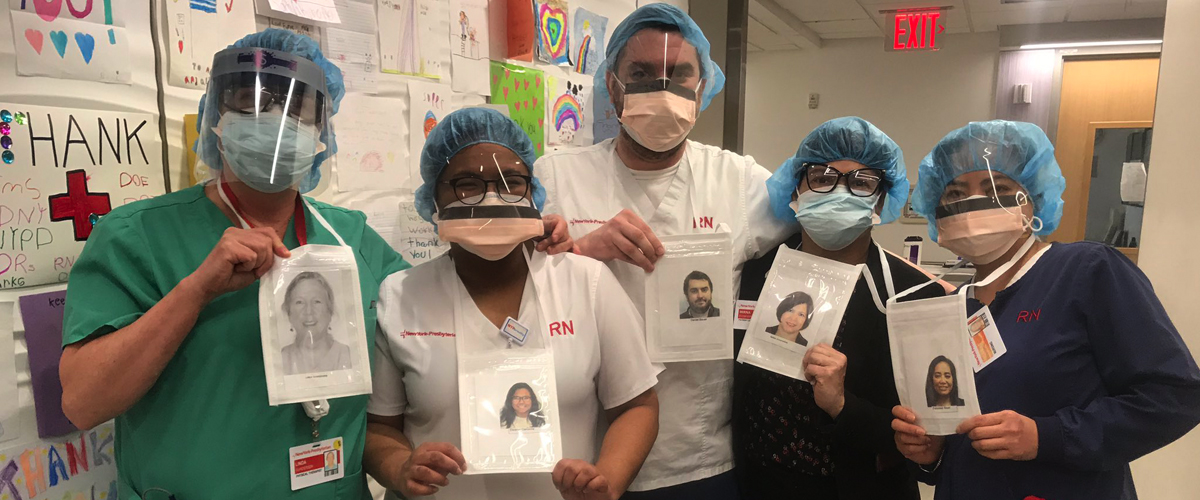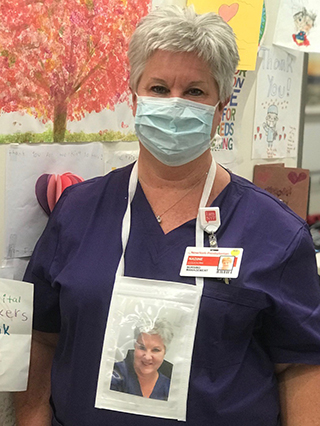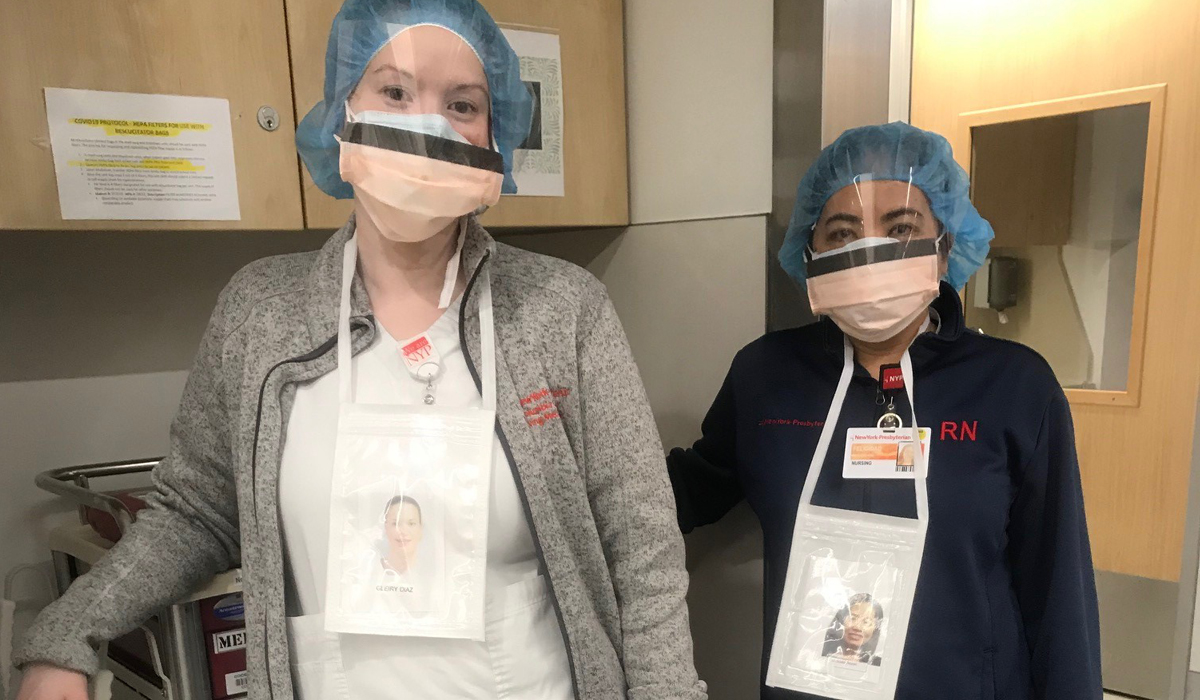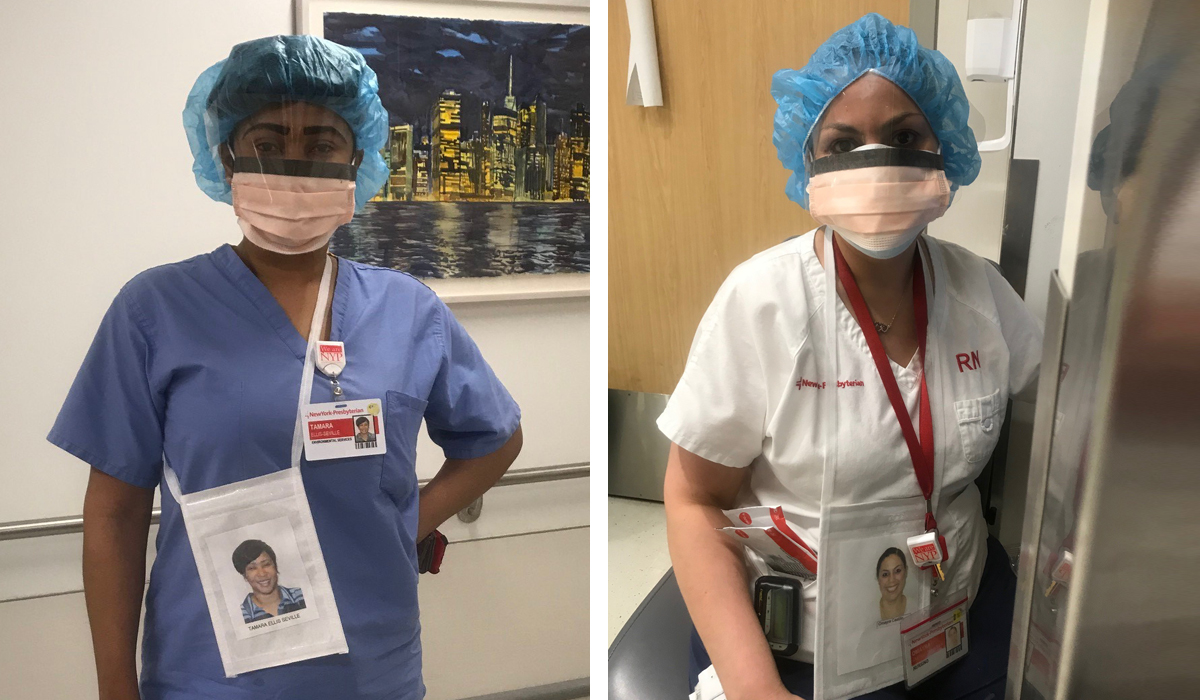The Faces Behind the Masks
At a time when hospital staff members have to wear masks, a team finds a way to make sure their smiles shine through for their patients.

Driving into work one day in mid-April, Nadine Couch, Patient Care Director of the orthopedics unit at NewYork-Presbyterian/Columbia University Irving Medical Center, had an idea. Her unit had pivoted to caring for COVID-19 patients, and she had been thinking that as well as she knew her staff, she still had a hard time recognizing her team of nurses behind all their personal protective equipment.

Patient Care Director Nadine Couch
“If I can’t recognize my staff, I can only imagine how patients must feel having nurses and physicians coming in and not being able to differentiate who is who,” she says.
Her idea was simple: have staff members wear pictures of themselves so that patients can see their faces.
“Our unit had pictures left over from a previous project to help physicians identify nurses caring for their patients,” Couch explains. “I realized we could use those pictures for our patients.”
Now nurses, intensive care unit technicians, environmental services staff, and physical therapists on the orthopedics unit walk around with photos of themselves easily visible in clear, plastic pouches that dangle from their neck.
“A lot of our patients feel alone or afraid,” says Gleiry Diaz, a nurse on the orthopedics unit. “They can’t have visitors, no one from outside. When they can’t see your face — even just a small smile that expresses you’re happy or that you’re listening — it’s hard to build a relationship. This helps with care and compassion.”
Djinie Emmanuel, another nurse on the unit, says one patient told her it makes such a big difference to see there’s a person behind the gown, gloves, and mask. “It’s like a reminder there is an actual person there; it humanizes things,” she says.
Unit assistant Mirna Echavarria says it’s also helpful among staff members, who may not immediately recognize who is working alongside them. “It’s nice for co-workers to be able to see a friend who is still here,” she says.
But the focus is on making the patients feel as comfortable as possible.
“We’re the only ones the patients have right now, so when you smile behind your mask, you hope your eyes are showing it,” Couch says. “But at least in the picture, it’s a reflection of your eyes and smile, the care, the comfort you want to offer patients knowing their families are not able to be with them.”




